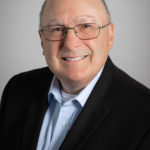Whether you got out of dental school last month or last century, take a
moment to marvel at the giant strides our profession has made of late.

HOWARD STRASSLER – Howard Strassler, DMD is a professor and the director of operative dentistry at the University of Maryland School of Dentistry; he also writes the “Cutting Edge” column in each issue of Incisal Edge. He practices in Pikesville, Maryland.
HERE’S A QUESTION for any clinician who, like me, graduated from dental school more than 30 years ago: Do you ever think back to what you were learning at the time? Even those professionals who graduated only in the last decade have witnessed a profusion of heretofore unknown techniques, materials, preventive measures and treatment choices. How did we get here? To put it plainly: It requires innovators, dental visionaries and bold, forward-thinking risk takers. Individuals who color outside the lines.
What triggered these thoughts was an article I read recently about an innovative treatment, now in (very) preliminary trials, that uses the knowledge and information contained in our personal genetic code to treat inherited diseases. The possibility that the puzzle of how best to tackle inherited chronic conditions might actually one day be solved is astounding and utterly enticing.
How does this relate to us as modern dental practitioners? Well, reaching new tiers of high-level care can’t be done without the efforts of all those types of innovators mentioned above. Can you imagine being able to make impressions only with materials you had to mix by hand, as though icing a cake? Today we simply take a wand, wave it over tooth preparations and capture an image that’s more accurate than even our best impression materials. In fact, the restorations milled from these digital impressions will fit better than the wax patterns created by even the best lab technicians.
Likewise, we no longer need to look at an image the size of a postage stamp to help with radiographic diagnosis. Digital radiography enables us to view pictures on a big monitor, enlarge the shots, change contrast and sharpness, even invert the image to get a better sense of a patient’s current status. Meanwhile, our ability to arrest caries took a giant leap forward with the introduction of fluoride. In the past decade, the introduction of silver diamine fluoride (SDF) has made an enormous impact on treating carious lesions, stopping caries in their tracks.
Don’t limit the use of SDF to children and primary teeth only, either: The supply of aging patients is only increasing, and SDF has become a vital treatment for root caries and caries around the margins of existing crowns and bridges.
I could continue to list the remarkable innovations of recent decades, but such an inventory would fill this entire issue of Incisal Edge. It’d fill several issues, in fact, with no room for anything else. I need no more than the next two sentences to summarize the importance of it all, though: These are exciting, rewarding times to be providing care for our patients. And with luck, we ain’t seen nothing yet.
HOWARD STRASSLER, DMD is a professor and the director of operative dentistry at the University of Maryland School of Dentistry. He practices in Pikesville, Maryland.
Hints From Howard
Bioactive to the Rescue
Bioactive materials, especially those with active fluoride release, have important clinical implications for older patients who are experiencing an increase in root caries. Consider, for example, patients with existing fixed prosthodontic restorations with recurrent caries who, because of transportation or mobility difficulties, can’t always—or ever—attend multiple lengthy restoration-replacement visits. For these people, use of silver diamine fluoride and glass ionomer restorations may be the answer that provides quality care in the face of personal and physical challenges. This new episode of Hints from Howard examines the latest bioactive fluoride releasing glass ionomers and fluoride treatments that can be an enormous boon to patients with equally big challenges securing treatment.



